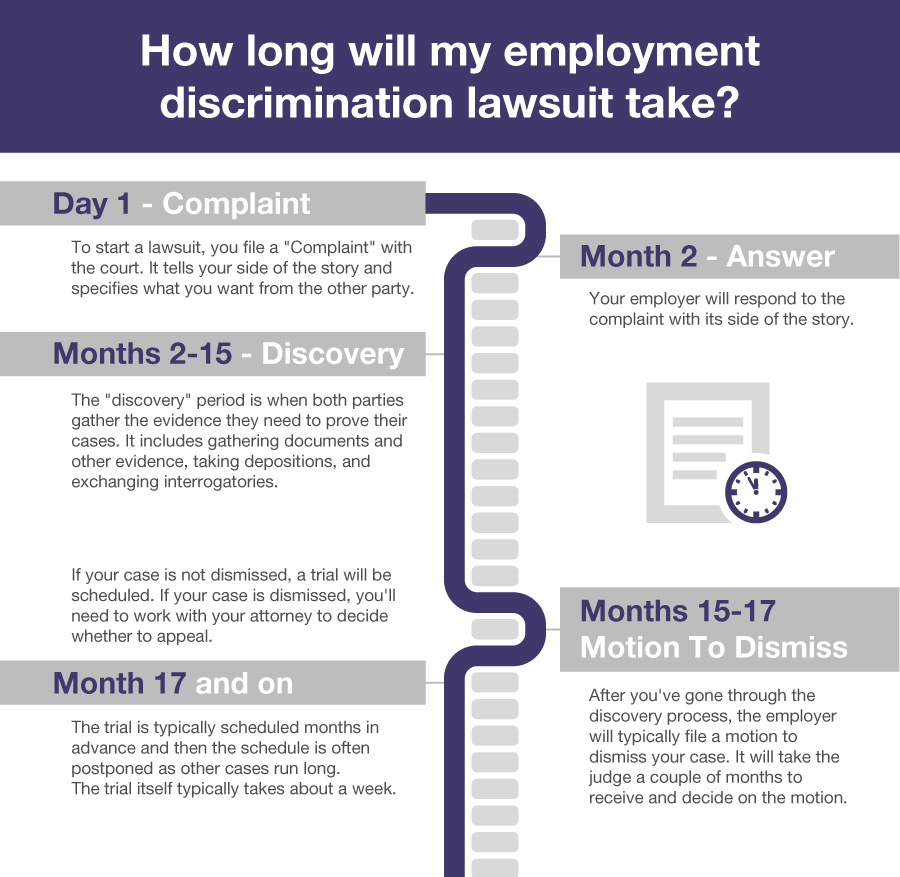duration of resolving an employment discrimination case can vary significantly depending on various factors, such as the complexity of the case, the jurisdiction, the court’s caseload, and the willingness of the parties to reach a settlement. While it is challenging to provide an exact timeframe, we can outline the general stages and estimated durations involved in resolving such cases.
Filing a complaint
The first step in an employment discrimination case is filing a complaint with the appropriate administrative agency, such as the Equal Employment Opportunity Commission (EEOC) in the United States. This process typically involves submitting a written complaint, providing relevant documentation, and completing any necessary forms. The time required for this stage can range from a few weeks to several months, depending on the agency’s workload and the complexity of the case.
Agency investigation
After receiving the complaint, the administrative agency will initiate an investigation into the allegations. This stage involves gathering evidence, conducting interviews, and reviewing relevant documents. The duration of the investigation can vary significantly, ranging from a few months to over a year, depending on the complexity of the case and the agency’s workload.
Mediation or settlement negotiations
In many jurisdictions, the agency may offer mediation or settlement negotiations as an alternative to litigation. This stage aims to facilitate a resolution between the parties without going to court. The duration of mediation or settlement negotiations can vary, typically ranging from a few weeks to a few months, depending on the parties’ willingness to engage in the process and the complexity of the case.
Litigation
If the case does not settle during the administrative process, the complainant may choose to file a lawsuit in court. The duration of litigation can vary significantly, depending on factors such as the court’s caseload, the complexity of the case, and any pre-trial motions or discovery processes involved. Employment discrimination lawsuits can take anywhere from several months to several years to reach a resolution, with more complex cases often taking longer.
Trial and judgment
If the case proceeds to trial, the duration can vary depending on the court’s schedule and the complexity of the case. Employment discrimination trials typically range from a few days to several weeks. After the trial, the court will issue a judgment, which may take several weeks or even months, depending on the court’s workload.
Appeals
Either party may choose to appeal the court’s judgment. The duration of the appeals process can vary significantly, ranging from several months to over a year, depending on the appellate court’s caseload and the complexity of the case.
In summary, the time required to resolve an employment discrimination case can range from several months to several years, depending on various factors such as the complexity of the case, the jurisdiction, the court’s caseload, and the parties’ willingness to settle.
